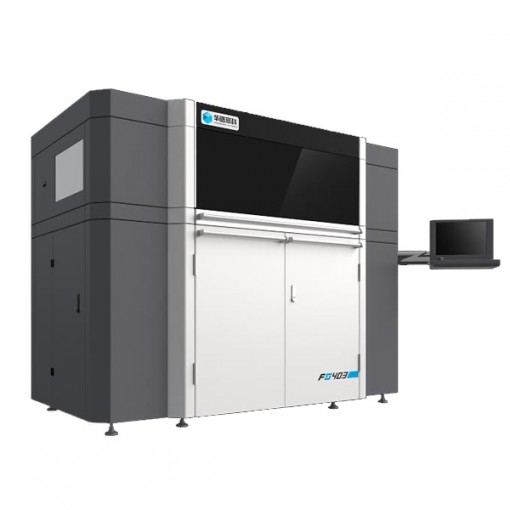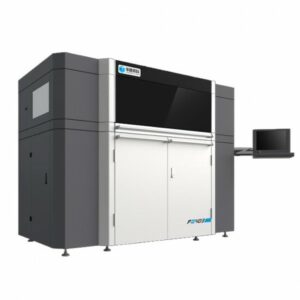The SS403P from Farsoon Technologies is part of the Chinese manufacturer’s 403P line of industrial machines, their ‘flagship production polymer system’. It is a 3D printer using selective laser sintering technology that is capable of processing polymer powders such as TPU or Ultrasint. It meets various needs, from functional prototypes to the manufacture of small-batch end-use parts for industry.
The SS403P Offers Productivity And Design Freedom
Combining a scanning speed of up to 15.2 m per second with a high efficiency roller system and a removable powder cartridge system, the 403P series offers increased productivity and a lower price per part. Its 8-zone heating system allows it to regulate the temperature to reduce distortion and increase the accuracy of the final parts. The Flight (Fiber Light) technology takes advantage of new scanning algorithms, a dynamic optical system, and open parameters for various powders and the machine itself. The Farsoon Flight SS403P is available in a black-and-gray color scheme.
The SS403p uses a carbon dioxide laser and high-precision three-axis digital galvo (Galvanometer) scanner, meaning it involves a physical mirror which is rotated by a motor. The scanning speed is up to 15.2 m/s. In terms of the SS403p printer, it has a maximum chamber temperature of 190°C ( 374 ℉ ).
The 403P series is offered in a configuration capable of withstanding high temperatures. It can therefore process high performance materials, such as PA6, for direct use applications. Finally, Farsoon offers an open platform, allowing total freedom of operation of its machines. Machine parameters and material choices can be decided by the user for maximum flexibility and freedom.
One manufacturer example of a part which can be printed using the 403p series (specifically, the HS403P) is an Intake Pipe for Passenger Vehicle Engine System, printed in PA12. This part is a functional prototype which they were able to print in one day, and offers excellent mechanical properties for its purpose. Lead time for the product was also significantly reduced compared to traditional machining methods.


